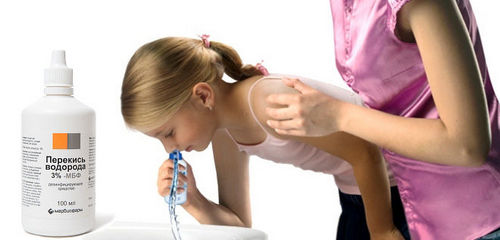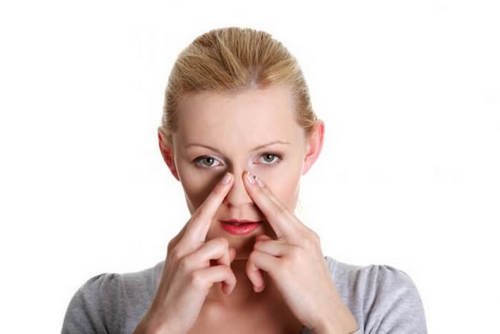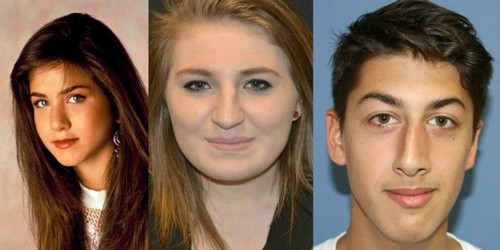Hydrogen peroxide is included in medicinal group of the peroxides, has a marked antioxidant effect. When washing it the nasal mucosa normalizes pH level that helps to significantly reduce the viability of pathogens.
Destroyed the cell wall of a pathogenic agent, decreases the number of colonies in the nasal passages.
For the first time the question whether it is possible to carry out nasal rinsing with hydrogen peroxide asked the German doctors in the mid-20th century. This technique is not widespread, but the effect of its regular use is pronounced, that does not doubt the validity of the procedure.
As a result of the decay components obtained peroxide water and atomic oxygen, has a strong disinfectant action. It reacts chemically with produce secretions (mucus, pus), resulting in the inflammatory process gradually comes to naught.
In some cases, nasal rinses with hydrogen peroxide?
The peroxide solution copes with various inflammatory pathologies of the nose.
Rinsing is usually prescribed for:
- polyposis;
- sinusitis;
- rhinitis;
- the sinusitis;
- viral or bacterial infections.

By the procedure decreases symptoms related listed diseases: swelling of the mucous membrane subsides, the volume of secretion is reduced, is pain. Regular use of this tool allows you to handle even the chronic inflammatory process, disturbing the patient for a long time.
Proven effectiveness of peroxide in bleeding from the nose. To do this, it is instilled with a pipette into the nasal passages several drops or insert the moistened medium tampons.
Contraindications to lavage
Before you wash your nasal cavities, you need to read the instructions that came with the drug. You should ensure that is used a 3% peroxide solution for rinsing the nose, not steeper. Mostly patients tolerated procedure well, however, not be superfluous to test for sensitivity to the active substances means. To do this, a few drops of the prepared solution was dropped on the back of the hand and wait about 10-15 minutes. If no reaction has occurred, the drug is approved for use.
The procedure itself has a fairly large number of contraindications.
You should not rinse with peroxide:
- severe and neglected diseases affecting the brain;
- deformities of the septum or other abnormalities of the structure of the nose;
- allergic reactions to components of the drug;
- the treatment of rhinitis in young children without the permission of the attending pediatrician;
- pregnancy;
- existing medical history of transplants of organs.
But, in any case, before washing, you should consult with your doctor. May in a particular case will require a completely different treatment.
How to rinse with peroxide?
Today in pharmacies offer two forms of hydrogen peroxide: pills (“Gidroperit”) and an aqueous solution. For washing are allowed to use only in liquid form. To perform the procedure you need to know a few simple rules: how to make mortar, how to self-wash the nose with peroxide.
Preparation of the solution
The peroxide before the procedure should be diluted with distilled water so as not to cause burning of the nasal mucosa.
In various pathologies are different solutions:
- Influenza, SARS: 15-16 drops of peroxide dissolved in 50 ml of distilled water. It’s very soft solution which is dropped in the nose one time, 3-4 drops.
- Frontal sinusitis, sinusitis, sinusitis: 10 ml diluted in 20 ml of distilled water. A solution of hydrogen peroxide is used for washing of the nose using a special bottle irrigator or by the method Proetta.
- Bacterial rhinitis: 5 ml dissolved in a quarter Cup of purified water and thus a weak solution of washing is carried out.
Equipment washing
There are several different techniques of cleansing the nasal passages using a peroxide solution. The most famous and effective of them are considered the procedures performed by the method Neumyvakina, Proeza, with irrigation system.
Nasal rinses with 3% hydrogen peroxide for Neumyvakina
This method of irrigation helps to clear the nose from accumulation of pathogenic microorganisms.
It is held as follows:
- Divorced according to the rules of the peroxide solution gaining two CC syringe without a needle.
- His head tilted to my shoulder and slightly back.
- The index finger pinch the nostril which is below, and the other is administered a diluted solution, while trying to draw the liquid into itself.
- The procedure is repeated, inclining his head to the other side.
- After washing much vysmarkivatsya not necessary. Carefully squeeze out the accumulated fluid, fingers pressing the nose wings.
Lavage in the treatment of ENT-pathologies Professor recommends no more than 2-3 times a day. For the prevention of this technique is used once a day, preferably in the first part of the day.
Washing out the nose for Proets
Differently, this technique is called “cuckoo”. It is performed as an outpatient in the ENT office. For this a special device is used with the pump. The resulting solution is in one nostril, and then using the “cuckoo” is produced suction the contents from the other.
Irrigation using irrigation bottle
- Diluted peroxide is poured into a special device with a nozzle for irrigation.
- Before keying must be well to clear the nasal passages to the accumulated nasal secretions with bacteria not the pocket in the Eustachian tube or in the sinuses.
- Next you need to bend down as low as possible over the tub or sink, make a full breath, turn your head slightly upward, then hold the breath.
- In nostril, located at the top, insert the nozzle, then slowly serve the fluid inside the nasal passage. While the solution should freely flow out the other side.
- Once the fluid stops draining, you need to blow your nose, scraping the nose of the liquefied mucus.
- Similarly rinsed with a solution of peroxide of the second nasal passage, head turning the other way.
In the absence of the bottle you can use a simple syringe, a disposable syringe or pipette.
Is it possible to rinse with peroxide kids?
Despite the fact that nasal lavage with diluted hydrogen peroxide is considered an effective procedure for many diseases of nasal cavities, this technique has several disadvantages. Since peroxide is one of the strongest oxidants, it can have a damaging effect on the mucous membranes of the nasal passages. That is why this drug most doctors don’t recommend the use in the treatment of children.
Nasal lavage with diluted hydrogen peroxide children is only possible in a pinch. It makes sense to use this technique when there is too thick secretions with purulent contents. In other cases, it is desirable to find other methods of treatment.



